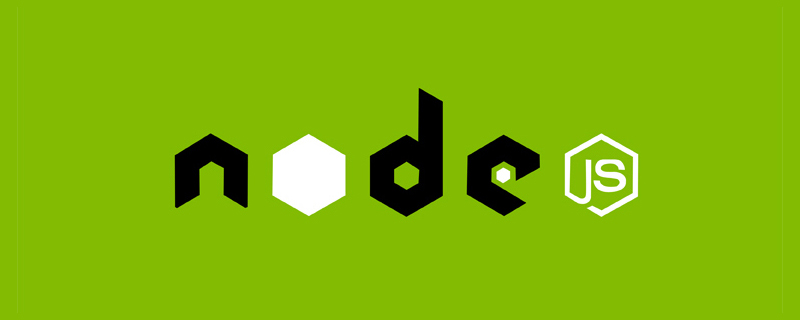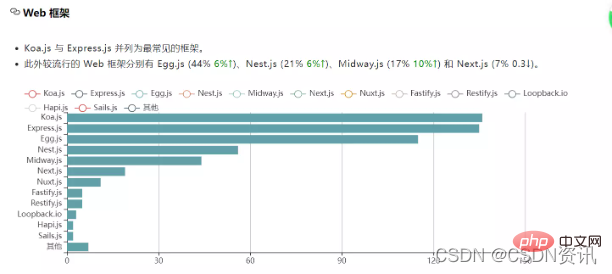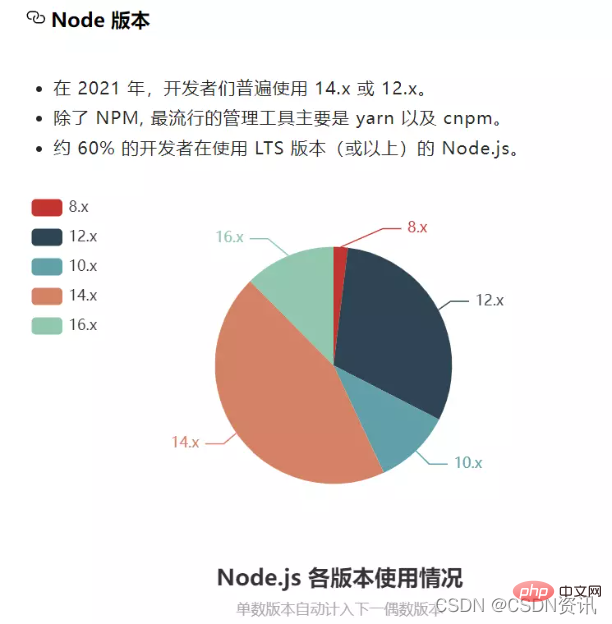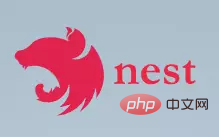
Node.JS is one of the most popular open source JavaScript runtime frameworks and has cross-platform capabilities for building code outside of the browser. Well-known developer Alex Ivanovs has been engaged in web development since 2005. Recently, he summarized some of the most popular Node frameworks based on front-end architecture surveys, developer survey reports, and personal project experience, hoping to help developers in the industry Those who benefit from it.
Node.JS not only has a huge open source ecosystem, but also can easily and flexibly develop scalable industry-level applications. With these advantages, it has won the support of many developers. Node.js has 75.9k stars in GitHub, 19k forks, 71.8k followers and 8.3k likes in Stack share. According to the StackOverflow 2021 Developer Survey Report, more than 50% of respondents said they are using Node.js in projects. Not only that, Amazon, Netflix, PayPal or Reddit all use Node.JS as their back-end framework.
Node.js can be used not only on the back-end, but also on the front-end. It can be said that it is both front-end and front-end. In recent years, the application scenarios of Node.JS have changed dramatically, and more and more frameworks are being built as hybrid (meta) solutions that can cater to both the backend and the needs of full-stack developers. According to the 2021 Node.js Developer Report, 53.49% of Node.js developers are engaged in front-end development, 33.33% are engaged in back-end development, and 30.62% of full-stack developers are using Node.JS.
In addition, it can be seen from the 2021 Node.js Developer Report that development frameworks have changed significantly, and there are more enterprise-level frameworks. For example, Alibaba's Egg.JS and Spring's Nest.JS have increased by 6% compared with last year.

The version update speed among Nodejs developers is also very fast. In 2020, developers mainly used Node 12.x, and by 2021, Node 14.x will account for nearly half (44.57%).

The development of Node.js has been unstoppable. Here are some of the most popular Node.JS frameworks.
1.Next.JS
Next.JS is a server-side rendering framework based on React. In recent years, Next.JS has developed rapidly. It only took one year to go from Next.JS 10 to Next.JS 12.
Next.JS uses React as its base but implements all server-side rendering structures through its own specifications. Since rendering is done server-side, it ensures a modular architecture for excellent development flexibility and provides a complete development suite supporting various libraries.
2. Nest.JS

Nest.JS is a framework for building efficient Node.JS server-side applications using progressive JavaScript, built with and fully supporting TypeScript, and combining OOP (Object Oriented Programming), FP (Functional Programming) and Elements of FRP (Functional Reactive Programming).
While frameworks like React speed up front-end development, the issue of application architecture is a pain point for many frameworks. But Nest solves this problem with an architecture-first approach. (Of course, this is specific to the backend)
3. Strapi

Strapi is a leader in open source Headless CMS. It is a framework that can easily, quickly and automatically generate safe and reliable back-end APIs. It can be said to make up for the shortcomings of the back-end. Strapi also allows developers the freedom to use their favorite tools and frameworks, and can be integrated with almost any language, framework or front-end library.
4.Remix

Remix is one of the fastest-growing full-stack architectures in recent years. It uses the characteristics of both distributed systems and local browsers to speed up page loading. In November 2021, Remix announced that it would close the paid subscription model. After being officially open source, it can be said to be evenly matched with Next.JS but each has its own merits.
Unlike traditional frameworks, Remix does not create a waterfall-based structure. Instead, data is loaded in parallel on the server side and then served as an HTML page. This also means that JavaScript-based features (such as form submissions) will not break the site if the user has JavaScript disabled.
5.Nuxt

Nuxt is a Vue-based framework that allows applications to be rendered on the server via Node.JS and have all the benefits of a fully interactive JavaScript application.
For Vue developers, the main advantage of Nuxt is the ability to pre-render views and serve them as static files. This has a great effect on SEO optimization and greatly improves interactivity.
6.SvelteKit

SvelteKit is an application framework powered by Svelte - build larger applications in a smaller footprint, standing out with a sophisticated file-based routing system. Get up and running instantly with advanced routing, server-side rendering, code splitting, offline support, and more.
7. Fastify

Fastify is committed to providing the best development experience with minimal overhead and a powerful plug-in architecture inspired by Hapi and Express. Fastify is one of the fastest web frameworks in this space and can handle up to 30,000 requests per second, depending on the complexity of the code.
8. Redwood

In 2020, GitHub co-founder Tom Preston-Werner released Redwood.JS, a new edge-oriented full-stack JavaScript web framework. Redwood integrates pre-determined back-end and front-end technology stacks and strives to provide developers with a Ruby on rails-like development experience.
The Redwood technology stack includes React, GraphQL (Apollo), Prisma, Babel, Webpack, etc. In addition, Redwood also supports JAMstack (a modern web development architecture based on client-side JavaScript, reusable APIs and pre-built tags). With this, it is also supported by many developers who like JAMstack and API.
9. Express
Express is not ranked high. As the oldest web framework in the Node world, has Express fallen out of favor? The answer is of course no. Express is still very popular. Data in 2021 shows that there are more than 9 million downloads per week, making it a favorite among beginners.
10. Adonis

Adonis includes everything you need to create a complete web application or API server. Although Adonis officially describes itself as a back-end framework, it is actually equally good at full-stack development. Native support for TypeScript makes Adonis a favorite among many developers.
11.Keystone

Keystone.JS is a CMS and web application framework based on Node.JS, an extensible open source platform for building Node.JS applications. KeystoneJS supports GraphQL, the architecture is highly scalable, and Admin UI is used.
Of course, nothing is perfect. The more people use it, the more complaints there will be. Some netizens believe that the standard library with Node.JS is very small, and almost all operations require pulling in a bunch of npm packages to execute, which leads to a rather confusing software package ecosystem.
But regardless, these frameworks are loved by many people, and in general, developers are happy to work with meta-frameworks because they don't have to learn a new framework from scratch.